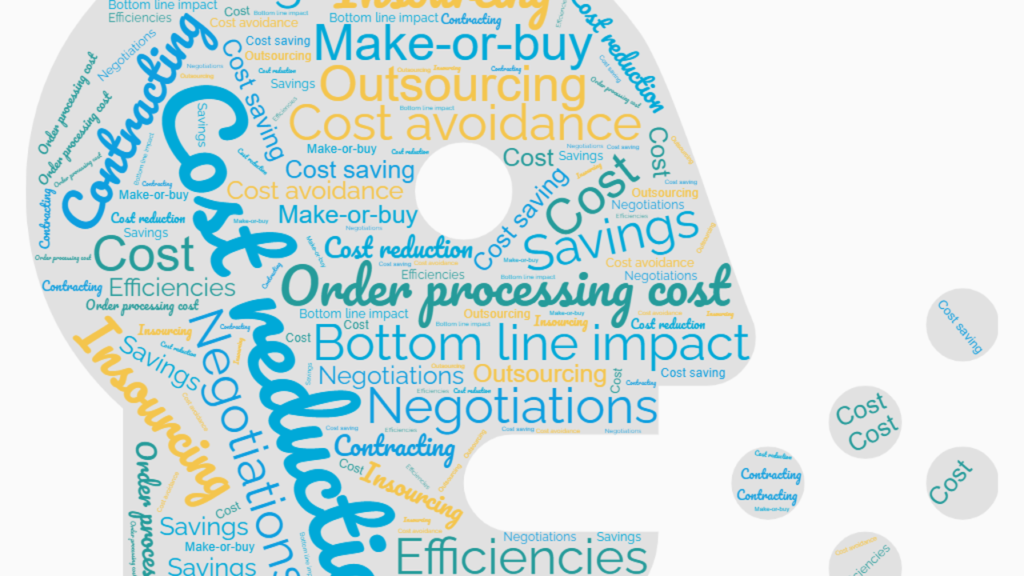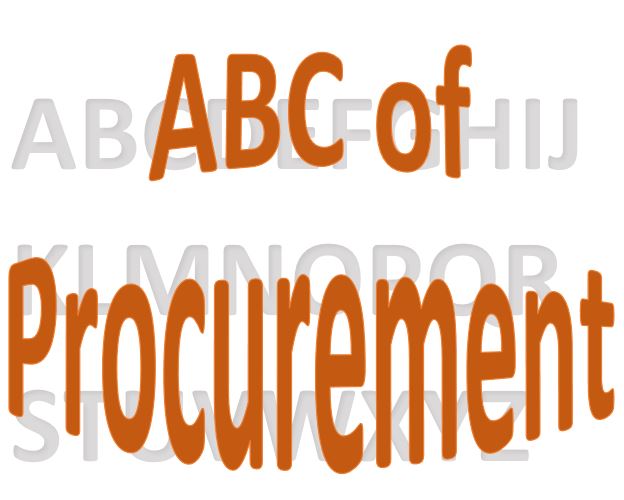In one of our meetings with the group CEO, he stated his view of what the procurement team shall become in the following years: “I want the Procurement team to become a profit centre”
As you can imagine, the first thoughts that came through our brains after this meeting were the standard ways procurement benefits the company:

I have reached out to several procurement professional groups and even had a session during a conference on this topic. As it turns out, procurement indeed does have options to bring direct revenue to the company, besides doing their regular job.
So, here are all options that we came up with. they are sorted based on how much they move away from the original procurement scope.
Option 1: cost optimization that goes straight to the bottom line
This is the part we in procurement know and does the best. Getting the five rights: Right product, quality, quantity, time, and place.
In my article “Impact of procurement on the bottom line”, I went into detail about how the reduction of price affects the P&L of the company. As we know, every reduction in the prices goes with full value into the profit of the company. On the other hand, there is a limit to savings, as prices cannot go down indefinitely.
Option 2: Internal services
Another option that is possible within large holding is internal cross-selling. Basically, you collect information about all products/services your group companies are offering. And share the information with other procurement teams, in case procurement is not centralised at the group level. Once there is a need, it will be fulfilled internally.
On the one hand, you are increasing the revenue on the group level. On the other hand, you’ll use the fact that you are in the same group to get a reasonable price.
Already this solution focuses more on increasing the company revenue, not so much on savings. Nonetheless, intercompany procurement is a KPI that the management will gladly accept as a procurement target.
Option 3: Bartering with the vendor
This option is interesting. Here you are selling the goods or services of your company to the vendor. Effectively, exchanging goods for goods instead of paying. It is a double-edged sword so be careful:
- The vendor may increase the price, hoping that you will accept due to your eagerness to boost your revenue.
- If there are issues with your product/service, you may lose both the sales and a good vendor.
In my career I had a chance to witness a bartering exercise on a large scale that made all stakeholders very happy:
1. Make wooden pallets and crates. Send to the vegetable farm.
2. Send the vegetables to the wholesaler. The wholesaler sells the goods to the shops.
3. Shops will return the pallets and crates back to the wholesaler.
4. The wholesaler pays the 1st company:
- In used pallets. They will be refurbished and reused or turned into heating wood for the factory
- In fruits and vegetables for the staff canteen
- In money, for the remaining dues
The only problem here was that the cash-to-cash cycle sometimes took 6 months. The benefit was the payment security. Everyone in the chain was very eager to get the payment (goods) out as soon as possible.
Option 4: Services to external customers
Let us start with the easy ones:
- Charge for vendor registration. While it can not be a significant revenue, it can, for example, pay for your supplier portal maintenance.
- Tender participation fees. Especially in large-value tenders, the fee serves as a barrier, preventing small companies from entering.
And then the bit more complicated ones:
- Providing training to 3rd party companies on the software used or utilizing the internally created Supply Chain and Procurement training programs. This can be done outside working hours. Hence, while it will not affect your day-to-day work, it will give both the employees and the company extra revenue.
- Providing Procurement-as-a-service. I have seen companies offering their clients to take care of all or a part of their procurement needs. Usually, it starts with tail or indirect spending. Your company uses the volumes to get an extra discount. This discount will be shared with the client, so both parties will benefit.
Option 5: A mix of any (or all) of the above
One of my colleagues gave me a great idea, applicable to large companies and holdings. Establish the procurement as a separate (on group level) entity. Basically, a mini-company. And then agree on budgets for purchasing. Get volume rebates from vendors based on the total spend for the entire group. Since you are a separate entity, you can also offer the same service to other companies outside the original holding.
The listed ones are options that I came across while doing the research for this article. I am very sure there are more ways to make procurement a profit-making department. Or, at least, reduce the budget line “Procurement” in the annual report.
Feel free to add more ideas in the comments.
Sources
https://www.certitrek.com/nlpa/news/purchasing-articles/purchasing-profit-center/
https://www.linkedin.com/pulse/procurement-cost-profit-center-samer-haddad-chartered-fcips-/
https://www.slideshare.net/JeffreyBartlett/e-book-procurement-optimization?from_action=save
https://www.supplychainbrain.com/blogs/1-think-tank/post/32060-how-to-turn-your-supply-chain-into-a-profit-center
https://www.mckinsey.com/~/media/McKinsey/Industries/Retail/Our%20Insights/Turning%20indirect%20sourcing%20into%20a%20multimillion%20dollar%20profit%20center/Turning-indirect-sourcing-into-a-multimillion-dollar-profit-center.pdf


